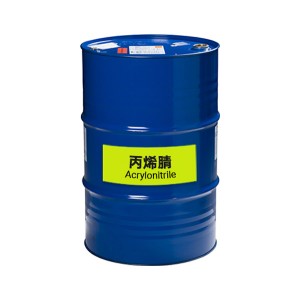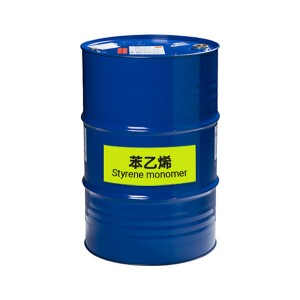-

Acrylonitrile market analysis
The acrylonitrile is a colorless to pale yellow liquid and volatile liquid that is soluble in water and most common organic solvents such as acetone, benzene, carbon tetrachloride, ethyl acetate, and toluene. Acrylonitrile is produced commercially by propylene ammoxidation, in which propylene,ammonia, and air are reacted by catalyst in a fluidized bed. Acrylonitrile is used primarily as a co-monomer in the production of acrylic and modacrylic fibers. Uses include the production of plastics, surface coatings, nitrile elastomers, barrier resins, and adhesives. It is also a chemical intermediate in the synthesis of various antioxidants, pharmaceuticals, dyes, and surface-active.
-

Acrylonitrile used in plastics and resin
The acrylonitrile is a colorless to pale yellow liquid and volatile liquid that is soluble in water and most common organic solvents such as acetone, benzene, carbon tetrachloride, ethyl acetate, and toluene. Acrylonitrile is produced commercially by propylene ammoxidation, in which propylene,ammonia, and air are reacted by catalyst in a fluidized bed. Acrylonitrile is used primarily as a co-monomer in the production of acrylic and modacrylic fibers. Uses include the production of plastics, surface coatings, nitrile elastomers, barrier resins, and adhesives. It is also a chemical intermediate in the synthesis of various antioxidants, pharmaceuticals, dyes, and surface-active.
-

Acrylonitrile to manafacture plastics
The acrylonitrile is a colorless to pale yellow liquid and volatile liquid that is soluble in water and most common organic solvents such as acetone, benzene, carbon tetrachloride, ethyl acetate, and toluene. Acrylonitrile is produced commercially by propylene ammoxidation, in which propylene,ammonia, and air are reacted by catalyst in a fluidized bed. Acrylonitrile is used primarily as a co-monomer in the production of acrylic and modacrylic fibers. Uses include the production of plastics, surface coatings, nitrile elastomers, barrier resins, and adhesives. It is also a chemical intermediate in the synthesis of various antioxidants, pharmaceuticals, dyes, and surface-active.
-

Acrylonitrile for styrene-acrylonitrile
The acrylonitrile is a colorless to pale yellow liquid and volatile liquid that is soluble in water and most common organic solvents such as acetone, benzene, carbon tetrachloride, ethyl acetate, and toluene. Acrylonitrile is produced commercially by propylene ammoxidation, in which propylene,ammonia, and air are reacted by catalyst in a fluidized bed. Acrylonitrile is used primarily as a co-monomer in the production of acrylic and modacrylic fibers. Uses include the production of plastics, surface coatings, nitrile elastomers, barrier resins, and adhesives. It is also a chemical intermediate in the synthesis of various antioxidants, pharmaceuticals, dyes, and surface-active.
-

Acrylonitrile for ABS resins
The acrylonitrile is a colorless to pale yellow liquid and volatile liquid that is soluble in water and most common organic solvents such as acetone, benzene, carbon tetrachloride, ethyl acetate, and toluene. Acrylonitrile is produced commercially by propylene ammoxidation, in which propylene,ammonia, and air are reacted by catalyst in a fluidized bed. Acrylonitrile is used primarily as a co-monomer in the production of acrylic and modacrylic fibers. Uses include the production of plastics, surface coatings, nitrile elastomers, barrier resins, and adhesives. It is also a chemical intermediate in the synthesis of various antioxidants, pharmaceuticals, dyes, and surface-active.
-

Acrylonitrile for PAN
The acrylonitrile is a colorless to pale yellow liquid and volatile liquid that is soluble in water and most common organic solvents such as acetone, benzene, carbon tetrachloride, ethyl acetate, and toluene. Acrylonitrile is produced commercially by propylene ammoxidation, in which propylene,ammonia, and air are reacted by catalyst in a fluidized bed. Acrylonitrile is used primarily as a co-monomer in the production of acrylic and modacrylic fibers. Uses include the production of plastics, surface coatings, nitrile elastomers, barrier resins, and adhesives. It is also a chemical intermediate in the synthesis of various antioxidants, pharmaceuticals, dyes, and surface-active.
-

Acrylonitrile for polyacrylonitrile
The acrylonitrile is a colorless to pale yellow liquid and volatile liquid that is soluble in water and most common organic solvents such as acetone, benzene, carbon tetrachloride, ethyl acetate, and toluene. Acrylonitrile is produced commercially by propylene ammoxidation, in which propylene,ammonia, and air are reacted by catalyst in a fluidized bed. Acrylonitrile is used primarily as a co-monomer in the production of acrylic and modacrylic fibers. Uses include the production of plastics, surface coatings, nitrile elastomers, barrier resins, and adhesives. It is also a chemical intermediate in the synthesis of various antioxidants, pharmaceuticals, dyes, and surface-active.
-

Acrylonitrile used in carbon fiber
The acrylonitrile is a colorless to pale yellow liquid and volatile liquid that is soluble in water and most common organic solvents such as acetone, benzene, carbon tetrachloride, ethyl acetate, and toluene. Acrylonitrile is produced commercially by propylene ammoxidation, in which propylene,ammonia, and air are reacted by catalyst in a fluidized bed. Acrylonitrile is used primarily as a co-monomer in the production of acrylic and modacrylic fibers. Uses include the production of plastics, surface coatings, nitrile elastomers, barrier resins, and adhesives. It is also a chemical intermediate in the synthesis of various antioxidants, pharmaceuticals, dyes, and surface-active.
-

Acrylonitrile for Acrylic fiber
The acrylonitrile is a colorless to pale yellow liquid and volatile liquid that is soluble in water and most common organic solvents such as acetone, benzene, carbon tetrachloride, ethyl acetate, and toluene. Acrylonitrile is produced commercially by propylene ammoxidation, in which propylene,ammonia, and air are reacted by catalyst in a fluidized bed. Acrylonitrile is used primarily as a co-monomer in the production of acrylic and modacrylic fibers. Uses include the production of plastics, surface coatings, nitrile elastomers, barrier resins, and adhesives. It is also a chemical intermediate in the synthesis of various antioxidants, pharmaceuticals, dyes, and surface-active.
-

manufacture of styrene-acrylonitrile copolymers
Styrene is primarily a synthetic chemical. It is also known as vinylbenzene, ethenylbenzene, cinnamene, or phenylethylene. It’s a colorless liquid that evaporates easily and has a sweet smell. It often contains other chemicals that give it a sharp, unpleasant smell. It dissolves in some liquids but doesn’t dissolve easily in water.
-

styrene used for Styrene Isoprene Styrene
Styrene is primarily a synthetic chemical. It is also known as vinylbenzene, ethenylbenzene, cinnamene, or phenylethylene. It’s a colorless liquid that evaporates easily and has a sweet smell. It often contains other chemicals that give it a sharp, unpleasant smell. It dissolves in some liquids but doesn’t dissolve easily in water.
-

styerene for MBS
Styrene is primarily a synthetic chemical. It is also known as vinylbenzene, ethenylbenzene, cinnamene, or phenylethylene. It’s a colorless liquid that evaporates easily and has a sweet smell. It often contains other chemicals that give it a sharp, unpleasant smell. It dissolves in some liquids but doesn’t dissolve easily in water.

